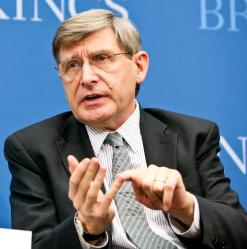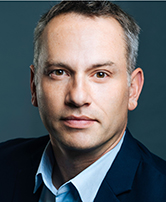This report was produced as part of the January 24, 2019, event Improving opportunities for those who want to work longer.
The nature of retirement is changing. Traditional private pensions, also known as defined benefit plans, have mostly disappeared in the private sector in favor of 401(k) plans, and this trend has begun to spread to public sector employees. This shift means that workers are now faced with more agency over their retirement: They are required to make their own saving decisions, decide how to invest their retirement savings, decide how long to keep working, and figure out how to manage the decumulation of their assets. The shift toward 401(k) plans has also placed more risk (and potential reward) in the hands of workers: They reap the downsides and gains from changing stock prices and interest rates, and they bear more of the financial responsibility for uncertain life spans and health in older ages.
In “Working Longer Policies: Framing the Issues” (PDF), Martin Neil Baily and Benjamin Harris look at the retirement decision through the lens of the life-cycle model plus the insights of behavioral economics and consider the trends in labor force participation and ask what could be driving these trends.
One underappreciated by-product of the shift to 401(k)s is that older Americans increasingly must decide when and how to retire. For a worker with a pension, this decision is often dictated by programmatic rules. When a worker can retire and receive the full value of a pension, continued workforce participation often makes little sense, given that they are paying into a retirement system but receive no additional benefit. But with a 401(k), there is no implicit tax on working—meaning that workers have an added incentive to work beyond the standard retirement date.
Indeed, people are already working longer. Whereas the overall rate of labor force participation has declined over time, the participation rate of older workers is rising, for both men and women.1 Some of this increase is surely the result of the shift away from employer pensions and the associated insecurity about having enough money to retire. But some of the increase is driven by more positive factors, such as expanded life spans, employers’ perceptions of the value of older workers, and older workers’ ability to offer a lifetime of experience and a willingness to train younger colleagues.
Longer working lives and the shift to 401(k)-type plans are only part of the retirement challenge. Government programs, particularly Social Security, continue to serve as the bedrock of American retirement; but benefit levels are not very high for those at or below the median income, and net benefits are reduced sharply by premiums for Medicare coverage and out-of-pocket medical costs. Medicaid provides nursing home care for low-income elderly people, but in facilities that are often quite undesirable. In addition, there is strong political pressure to cut “entitlements.” and the largest entitlements are Social Security and Medicare. Pushback from the electorate will make it difficult to cut these programs, but it is unlikely they will become more generous.
In short, Americans who are looking ahead to a retirement that may last 20 years or longer are facing formidable challenges. Much of the economics literature has focused on ways to encourage more saving, particularly through the design of opt-in provisions in 401(k) plans. This approach has had some success, but it has not solved the retirement policy challenge. This paper—written as part of a joint endeavor on retirement security between the Brookings Institution and the Kellogg School of Management—looks at policies to encourage people to work longer.
Read the full paper here.
The authors did not receive any financial support from any firm or person for this article or from any firm or person with a financial or political interest in this article. They are currently not an officer, director, or board member of any organization with an interest in this article.
-
Footnotes
- The overall labor force participation rate has risen in the past few years with the economic recovery, but this is after a prolonged period of decline.




